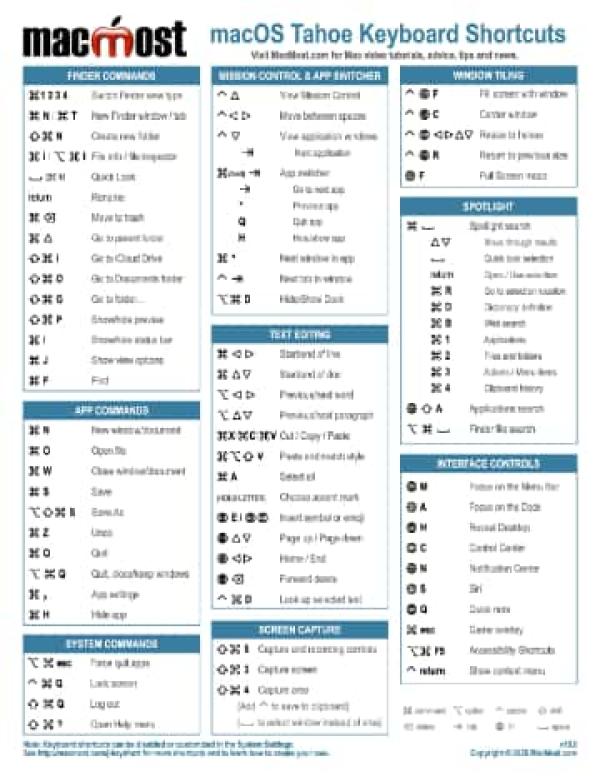Safe Mode can be used to troubleshoot or even fix some problems with your Mac.
▶ You can also watch this video at YouTube.
▶
▶
Video Transcript
Hi, this is Gary with MacMost.com. Let's take a look at using Safe Mode on your Mac.
Safe Mode is a special mode that you can get to by restarting your Mac in a special way. It can help, sometimes, solving some problems with your Mac. Most likely if you're looking to boot into Safe Mode it's because you've read somewhere or been told by somebody in a support role that booting into Safe Mode may fix a problem you're having.
Booting into Safe Mode actually does three different things. First, it will run some diagnostics when you boot into Safe Mode. If it finds any problems it may actually just automatically fix those. So just booting into Safe Mode and then booting back into Normal Mode may actually fix some things. Second, it will reset some caches used by certain processes on your Mac. Doing that may also just automatically fix things that may be wrong. Third, when you boot into Safe Mode your Mac isn't going to load third party extensions and things that run in the background. It won't load some other things like, for instance, any non-system fonts. This allows you to check your Mac very easily to determine whether the problem you're having is with the hardware or your base system or with something that you have installed.
Now first before you reboot your Mac into Safe Mode something you want to try is just doing a normal restart of your Mac. That actually does check for some problems and may fix things. So you just want to try a normal restart and see if whatever problem you're having is still there.
If that doesn't work then you can boot into Safe Mode in one of two ways depending on if you have a newer Apple silicon Mac or an older Apple Intel Mac. If you're unsure you can check this by going to the Apple Menu and then About This Mac. Then look and see what it says for Chip. If you see anything with an M, like M1, M2 or M3 or so on, then you have Apple Silicon. If instead you see the word Intel that means you have an older Mac with an Intel processor.
By the way, if you find these videos valuable consider joining the more than 2000 others that support MacMost at Patreon. You get exclusive content, course discounts and more. You can read about it at macmost.com/patreon.
So if you have an Apple Silicon Mac to boot to Safe Mode what you want to do is first shutdown your Mac. Then you want to start it up by pressing and holding the Power Button. On MacBooks that will be a key on the keyboard. On other Macs, like for instance on a Mac Mini, it's a button on the actual device. You want to continue holding the Power Button until you see it loading Startup Options. Then you can release the Power Button and wait for it to finish. Now you should see a list of the Drives you have attached to your Mac. Probably just the one drive, Mackintosh Hard drive, or perhaps you've renamed it. You want to click on it and you'll see, underneath it a button for Restarting Your Mac using that drive. But what you want to do now is Hold the Shift Key down and you'll see it will change to indicate that you can start in Safe Mode. So with the Shift Key held down you want to click and now it's going to boot in Safe Mode.
So now you want to wait for it to reboot in Safe Mode. You may have to enter your Mac Account Password twice. I think the first time it's for FileVault and the second time is to actually log into the account. If you want to check whether or not you've successfully booted into Safe Mode you can go to the Apple Menu and then go to the first item, but hold the Option Key down. Now this will take you to System Information. Go and select Software on the left. Once you do there's a spot on the right that shows you which mode you're booted into. It should say Safe.
Once you're in Safe Mode don't try and do any actual work. Don't try to open up any of your regular documents. Instead try to recreate the problem. For instance if you're seeing a problem with Finder Windows open up a Finder Window or two and see if the problem occurs in Safe Mode. If a problem you've been experiencing doesn't happen in Safe Mode now you know that it is not a hardware issue and it's not an issue with the operating system. It's got to be an issue with something you've installed on your Mac.
But what you don't know at this point is whether booting Safe Mode has actually fixed the problem by running diagnostics and clearing out caches. So the next thing you want to do, regardless of whether the problem is there or not, is to Restart your Mac and let it boot in Normal Mode. Now if you've experienced the problem in Safe Mode it's probably still there in Regular Mode and at this point you want to contact Support at your Company, School, or call Apple Support for home users and try to get to the bottom of it.
But if the problem wasn't there in Safe Mode but now it is back again when you're using your Mac regularly, now you need to investigate further. For instance, go into System Settings and under General look for Login Items & Extensions. So here's the item that will automatically launch when you log into your account and below that you'll see Third Party Apps That Will Launch in the Background. It's most likely something here that is causing the problem. So what you want to do is the process of elimination. Turning different things off, restarting and seeing if the problem is still there. Once you've identified that one of these items is actually causing the problem you can contact support for that company and find out, maybe, if there's an update or something you can do to alleviate the problem or uninstall the software if you don't need it anymore.
Another useful technique that is similar to Safe Mode is to create a separate user account. You go into System Settings and then look for Users & Groups. In here you can add a user. You can create another user that's just you. Just give it a temporary name and then set it up. It will basically be a default account. Everything set to default. There shouldn't be any apps or extensions running when you log into this account. If the problem doesn't happen with this account but still happens with your main account then it is just a matter of finding out what is running in your main account that isn't running in this new default account that is causing the problem.
You can go to this page at Apple's site for more details about Safe Mode. You'll also find information on this page on how to start in Safe Mode if you're using an older Intel Mac. Basically what you do is hold the Shift Key down while booting your Mac and it will go right into Safe Mode and show you there at the top of the screen.
So there's how to use Safe Mode on your Mac. I won't solve any and all problems that you have but it will help in some situations. Hope you found this useful. Thanks for watching.



Thanks bunches